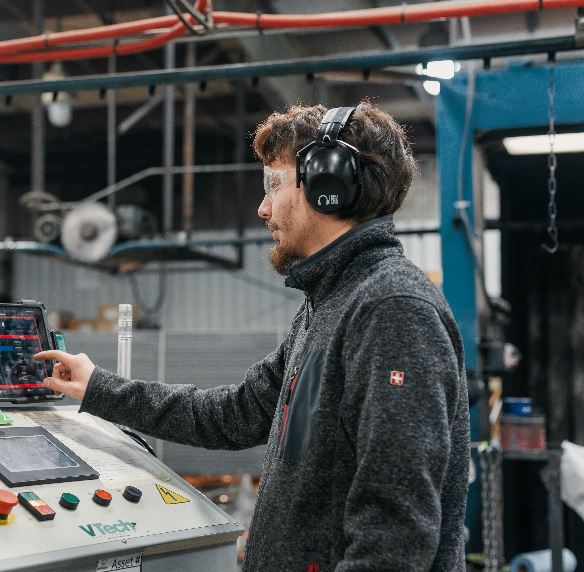Unlock the Secrets to Increased Productivity with Redzone's Newly Released Benchmark Report! Download Today
June 3, 2024

This comprehensive guide on Lean Manufacturing explores the fundamental concepts, processes, and benefits of implementing lean methodologies in manufacturing settings, aimed at boosting productivity and reducing costs.
Lean manufacturing is a systematic approach designed to minimize waste while maximizing efficiency in production processes. It fundamentally focuses on:
Lean manufacturing not only emphasizes waste reduction and efficiency but also places significant importance on customer value and employee involvement. By engaging workers and focusing closely on what the customers value, lean manufacturing creates a more responsive and adaptable production system. This approach helps businesses maintain competitive edges by producing high-quality products at lower costs and with faster delivery times.
Lean manufacturing enhances productivity and eliminates unnecessary costs through targeted strategies aimed at reducing waste and optimizing efficiency. Here’s a succinct breakdown:
These elements work together to create a lean manufacturing system that is not just about cutting costs but about enhancing overall production effectiveness.
The five principles of Lean Manufacturing offer a strategic framework to guide organizations towards more efficient and waste-free production processes:
These principles collectively encourage a culture of continuous improvement, driving organizations to become more efficient and adaptable in their manufacturing processes.
Lean manufacturing identifies eight primary types of waste that can impede efficiency and productivity. Understanding these wastes is crucial for streamlining operations:
Addressing these wastes can significantly enhance operational efficiency and reduce costs, making an organization more agile and competitive.
Lean manufacturing principles are not just theoretical concepts; they are proven strategies that have been successfully implemented in real-world scenarios, resulting in significant improvements in productivity, efficiency, and employee engagement. Here’s how these principles have been put into practice, illustrated with a real-world example from Honeyville:
Honeyville’s facilities in Ogden and Rancho Cucamonga provide a compelling case study in lean manufacturing. By integrating lean principles with Redzone’s technology, they achieved remarkable improvements:
These achievements at Honeyville underscore the practical benefits of lean manufacturing principles when combined with effective technology and a strong focus on culture. Such integrations not only optimize production processes but also build a resilient and motivated workforce. For more detailed insights into these transformations, further exploration can be done on Redzone’s Miracle Stories.
Both Lean Manufacturing and Six Sigma aim to improve manufacturing efficiency and quality, yet they approach these goals with distinct methodologies and focus areas.
Six Sigma aims to enhance quality by reducing defects and variations in processes using a data-driven approach and statistical tools. It follows the DMAIC (Define, Measure, Analyze, Improve, Control) framework to minimize errors, targeting 3.4 defects per million opportunities (DPMO).
Lean focuses on minimizing waste and maximizing productivity. It uses techniques like value stream mapping, 5S, and just-in-time production to streamline operations and improve process speed, enhancing customer value by reducing non-value activities.
By understanding the complementary strengths of Lean and Six Sigma, organizations can effectively tailor their process improvement strategies to meet specific goals, maximizing both efficiency and quality.

Lean manufacturing principles have shown to dramatically improve operational efficiency, waste reduction, and employee engagement, as evidenced by real-world applications like those at Honeyville. Integrating Redzone’s connected workforce platform can further empower these efforts, enhancing the effectiveness of lean strategies in several key ways:
By leveraging Redzone alongside your lean manufacturing initiatives, your organization can not only see improvements in productivity and efficiency but also build a more responsive and adaptable manufacturing environment. These tools and strategies are essential for businesses looking to thrive in competitive markets by maximizing value and minimizing waste.
Start transforming your production processes today by exploring how Redzone can complement and enhance your lean practices. Book a demo today at Redzone to see these benefits in action.
Twice the Frontline Engagement: Priceless A spring in the step, a smil...

Contact us and let's begin empowering your frontline and growing your bottomline.
